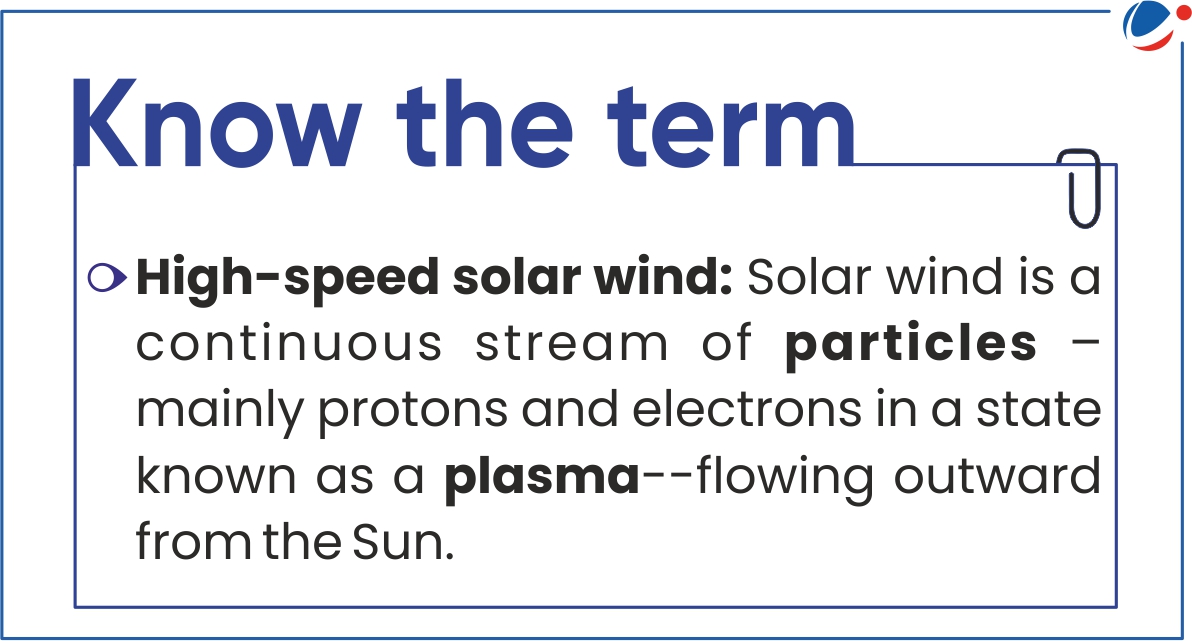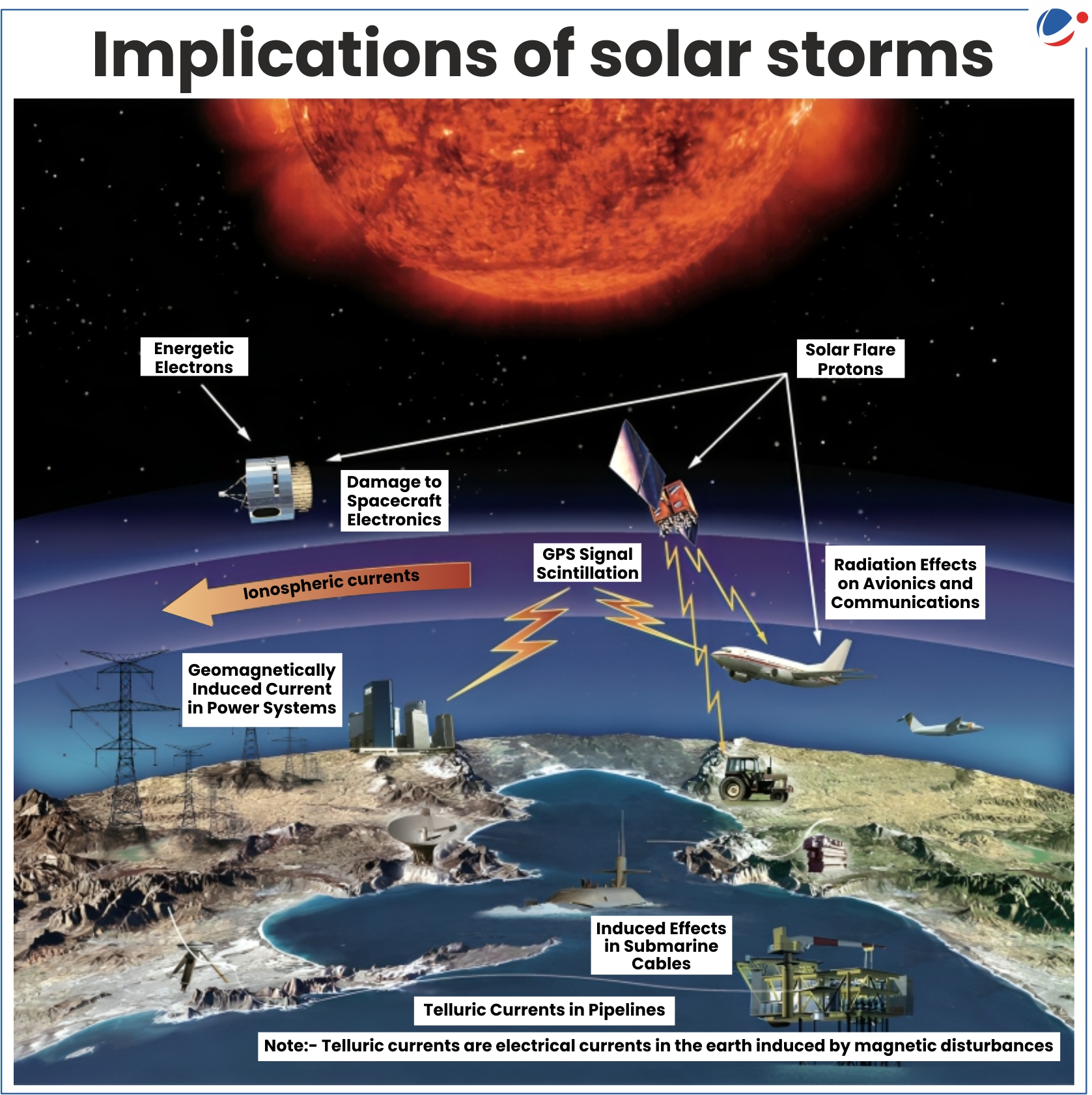Why in the news?
Recently, Earth witnessed G5 level of solar storm, the strongest in two decades and possibly one of the strongest displays of auroras in past 500 years.
What are Solar Storms?

- Solar storms are like massive bursts of energy from the Sun.
- They happen when a large eruption on the Sun's surface, often accompanied by solar flares and coronal mass ejections (CMEs), accelerates charged particles to incredibly high speeds.
- Depending on the intensity, they are classified from G1 (Minor) to G5 (extreme).
- High speed solar winds bring geomagnetic storms.
- These are a result of Sun entering a period of peak activity called Solar Maximum.
- Solar Flare is an intense burst of radiation, while CMEs are huge cloud of plasma (hot, ionized gas) and magnetic fields ejected from the Sun near Sunspots.
- These ejected particles can travel over a million miles per hour, and when they reach Earth, they interact with our planet's magnetic field, causing disturbances.
The Sun's Activity Cycle
- The Sun goes through cycles of activity, with periods of high and low activity.
- These cycles last about 11 years, and during the peak of the cycle, called the solar maximum, there are frequent solar storms and increased instances of sunspots (cooler regions on the Sun's surface)
- This is because the Sun's magnetic fields are more complex and twisted during this phase, leading to more eruptions and ejections of charged particles.
Implications of solar storms
- Damage to space infrastructure: Highly energetic particles can penetrate the materials of spacecraft and potentially damage them.
- Damage to ground assets: such as power grids and can also interfere in radio communications.
- Dangers to satellites: Intense space weather causes changes in Earth's atmosphere and making it difficult for satellite to stay on track.
- Affects ionosphere: by disrupting the use of high frequency radios used for search and rescue, the Global Positioning System (GPS), and even ground/air communications within the aviation industry.
- Negative impact on Astronauts: it is caused due to Increased radiation affecting astronauts on International Space Station having harmful effects on health.
- Auroras: An aurora (northern or southern light) is caused when charged particles from the Sun, mainly electrons and protons, interact with the upper atmosphere.

Missions to study solar activity
- Aditya L-1 (India): Launched in 2023, this is India's first space mission dedicated to observing the Sun.
- Parker Solar Probe (NASA): Launched in 2021, this spacecraft became the first to fly through the Sun's outer atmosphere, the corona.
- Solar Orbiter (NASA/ESA): Launched in 2020, this mission aims to take the closest-ever images of the Sun and study the solar wind.
- Interface Region Imaging Spectrograph (NASA): This mission aims to understand how the Sun's atmosphere is energized, leading to solar eruptions.
- Solar and Heliospheric Observatory (NASA/ESA/JAXA): Launched in 1995, this observatory monitors the effects of space weather on Earth.



